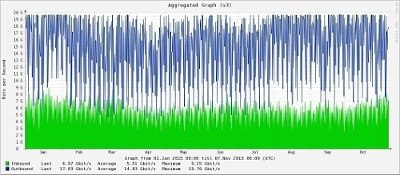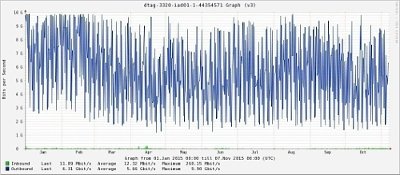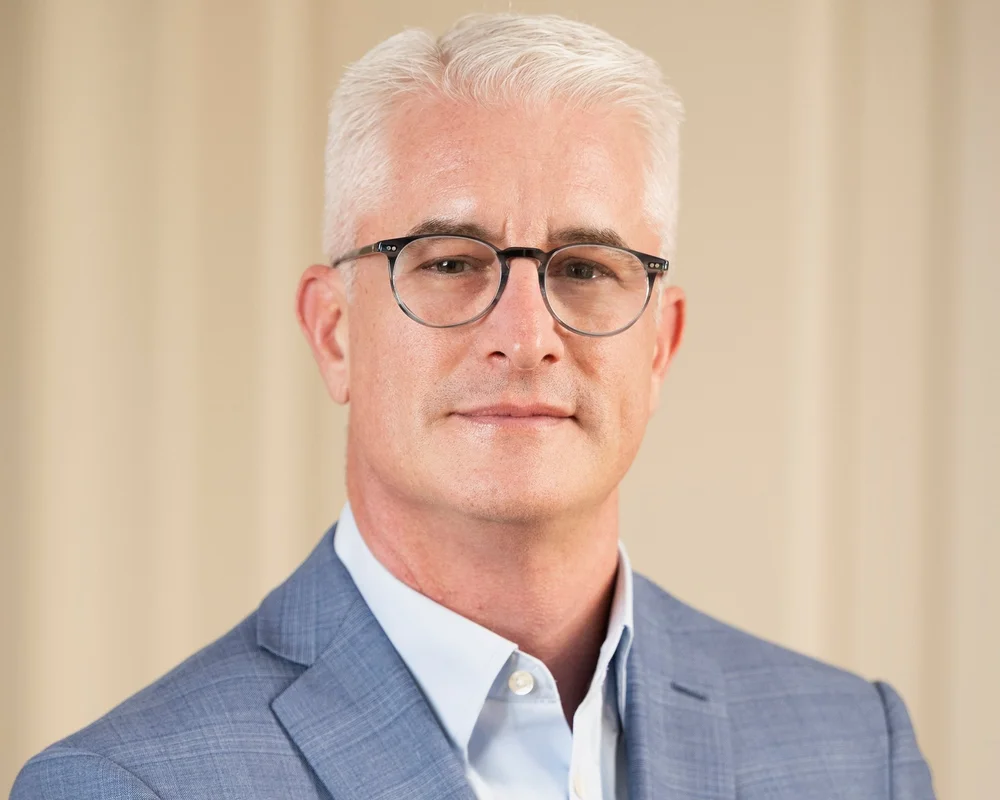This morning in a U.S. Federal court in Virginia, Cogent Communications has filed suit against Deutsche Telekom A.G. for breach of contract. Cogent says that DT has ‘interfered with the free flow of internet traffic’ by ‘refusing to increase the capacity of the interconnection ports that allow the exchange of traffic’.
Earlier this year as part of its new Title II-based net neutrality plan the FCC inserted itself into the world of peering and interconection as watchdog, at least in the USA. Soon thereafter, a series of new interconnection agreements between internet backbones and last mile providers were announced, apparently defusing what had been a tense, public standoff between content providers on one side, eyeball networks on the other, and with backbone operators in the middle.
The practice of letting peering points get congested as a means for one network to pressure another to pay for the right to interconnect has a murky but long history. Basically, it’s a contest of pain thresholds and blame shifting, as customers on both sides see poor performance until the situation is resolved. With the rise of Netflix and the vast amount of OTT traffic it generated, the effects of such disputes have risen much closer to the surface. Cogent is taking this one to court.
Cogent interconnects with DT in both Frankfurt and Ashburn, and they put out these two graphs:
 |
 |
The image on the left represents traffic in Frankfurt, with the green being traffic that is inbound to Cogent and the blue being outbound to DT, while the right shows the same thing in Ashburn. When the blue hits the top of the graph, packets get dropped — as is clearly happening a lot, especially in Frankfurt. Cogent says this is harming US companies who don’t have a European presence but have traffic that German consumers want to interact with, but clearly it’s also not helping European companies seeking a different route to German consumers either.
But you can read other things into the graphs above that help flesh out the story. The traffic is quite asymmetrical, with far more bits flowing to DT than to Cogent. That’s very common of course when it comes to the modern internet. Consumers consume much more than they generate. Peering agreements have historically envisioned the exchange of balanced traffic, despite the fact that balanced traffic is a thing of the past on today’s internet. DT is surely going to be bringing that side of things to the table when they talk about breach of contract.
Another interesting feature is that DT hands nearly all the traffic it has with Cogent in Germany rather than sending it across the Atlantic itself. We can probably assume that most of DT’s traffic comes from European eyeballs, while Cogent’s biggest sources are in the US but with a substantial European wholesale presence as well. Cogent clearly wants to deliver much of what it has for DT in Frankfurt, but delivers what it can in Ashburn. DT, for its part, is basically hot-potatoing all its traffic to Cogent, i.e. handing it off as soon as possible, into a clearly overburdened congestion point. While clearly they’d have less to hand off, it wouldn’t be this much less without a conscious decision.
The other thing to note is the timescale. Both plots cover an entire year, in which the situation did not change at all. Dysfunction anyone? And so now the courts get involved. Or perhaps we just see negotiations get restarted again and things get quickly settled — it wouldn’t be the first time. At least nobody is depeering anybody else, yet…
If you haven't already, please take our Reader Survey! Just 3 questions to help us better understand who is reading Telecom Ramblings so we can serve you better!
Categories: ILECs, PTTs · Internet Backbones · Internet Traffic






Most of us are aware of the smarmy history of Cogent in this space. They mask services under the guise of internet traffic so they can avoid building their own backbone. They share a great blame for the deep commoditization that has occurred. Many of the domestic LECs have tried to fight it and usually back down in the court of public opinion, given that Cogent host much of the porn on the internet, and end consumers revolt when they can’t get their fix.
Let us know when you figure out what you’re talking about and try public posting again.
Did your browser translate to Chinese or something? Anons comment made sense to me, and the track record of Cogent is obvious. Hell, the related article links directly above these posts seem to sum it up pretty well:
*Last Mile Interconnection Disputes Spread, Cogent and FT Square Off
*Verizon, Cogent Tussle Over Peering and Netflix
*Sprint and Cogent Kiss and Make Up
*FBI Takes Down MegaUpload, With Cogent in the Crossfire
*More On the Cogent-Sprint Peering War
That doesn’t even count their priors with Comcast, Level 3, or TWC with depeering fights. There’s a common element in every one of them. Did your browser translation issues mask who that common element is?
Cogent has spent years using other people’s internet backbone as free passage for transport-like services they were selling at rock bottom prices, thereby driving the rate of other people’s MPLS, IPVPN, and others through the floor. And every time someone calls them on it, they cry “peering” as if they are an equal player. And once the porn and torrents are shut off, the public turns really quickly on the last mile they know, not the jerks sitting behind it all.
Aren’t you an ISP, that should be obvious – or are you a Cogent buyer? That porn has to go somewhere.
“Cogent has spent years using other people’s internet backbone as free passage”
That’s the primary thing that’s full of hot air.
Most of the Cogent haters, I’d imagine, are those at competitors.
I would say that while Cogent does have a longstanding reputation for playing interconnection hardball, they are far from the only one deserving of that reputation. I think most of Cogent’s reputation comes from the fact that they they tend to air more dirty laundry in public rather than battle it out in the proverbial smoke-filled room.
1) They should interconnect at more than two places.
2) Does DT include their T-Mobile subsidiary?
3) Who should be paying who?
4) I find it hard to believe that two networks of that size have so little between them.
They may well have more interconnection points and Cogent just chose to offer traffic graphs for two. I have no idea if DT includes T-Mobile in the traffic exchanged here, but I’m guessing no, it’s probably done separately.
Who should be paying who is practically a religious question. 🙂
If you look at their peeringdb listings, they are both at many of the same locations. So there are options of other places to peer if they aren’t already doing so.
According to bgp.he.net, T-Mobile US doesn’t use DT as a transit provider. So the US mobile traffic isn’t part of that. In fact, T-Mobile US hands it off to zayo who interconnects in LA with DT.
However some of the European T-Mobile properties use DT as transit. Austria, Czech, Netherlands, Germany, and Poland from what I could tell from bgp.he.net.
From Cogent’s looking glass, they interconnect in DC, NYC, Frankfurt, Amsterdam, and Paris. Cogent seems to be trying to favor handing off packets in Amsterdam and Paris in Europe versus the congested Frankfurt. US traffic is about split between DC and NYC from what I can tell from traceroutes.
I don’t see a public looking glass for DT’s network to do tests the other direction.
Here is DT’s looking glass:
https://f-lga1.f.de.net.dtag.de/index.php?pageid=lg